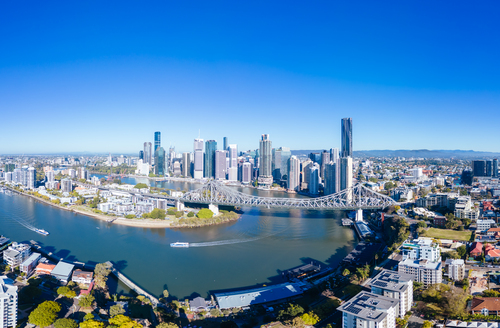The Morrison Government has released a plan to reduce congestion in major cities, encourage more skilled migrants to enter and reside in regional areas. On 20 March 2019, Prime Minister Scott Morrison announced that for the next four years immigration will be capped 160,000 migrants per year. While the total amount of immigration will be capped, the number of skilled migrants entering Australia will be raised using regional visas and skilled visa streams.
The New Plan To Lower Numbers & Add More Regional Migration
The plan presented by the Morrison Government outlines a new, lower cap on Australian permanent immigration. The difference between the previous “cap” and the new policy is 30,000, approximately 15%. Prior to these changes, there was not a “cap” that immigration focused on. While there was a limit of 190,000 migrants per year, Australian migration usually stays around 160,000. For example, last year there were 162,000 permanent immigrants who arrived in Australia. Thus, the cap of 160,000 basically represents the current climate of Australian immigration.
While total immigration may have been slightly lowered, the new population plan includes 23,000 new visas which require skilled workers to live and work in regional Australia for three years before they can apply for permanent residency. This is a significant jump from last year’s 8,534. Moreover, The employer-nominated stream of the visa will have 9000 places, while the state and territory-nominated scheme will have 14,000 spots.
Scott Morrison said the government’s plan “manages population growth by adopting well targeted, responsible, and sustainable immigration policies”...
...“It will take pressure off in those cities that are straining, while supporting the cities and towns that are keen to have stronger growth”.
The New Visas
Skilled Work Regional (Provisional) subclass 491 visa
The 491 visa will operate in a very similar way to the current 489 visa which it is superseding. The major positives in the new 491 visa are the promises of an increased number of eligible occupations (over 500), increased points for State or Territory nomination (10 to 15), and a slight expansion of what defines regional Australia.
The biggest negative for 491 visa holders is that the length of time required before being eligible for permanent residency increases from two years to three years.
The new 491 visa will come into effect on 16 November 2019.
Skilled Employer Sponsored Regional (Provisional) subclass 494 visa
The 494 visa supersedes the 187 visa, with the biggest change being that is now a provisional visa and not permanent residency. There is still a pathway to permanent residency, but this is only after three years like the 491 visa.
The major positive is a much larger list of eligible occupations (almost 700) which will give employers in regional Australia greater flexibility to meet skill shortages.
The new 494 visa will also come into effect on 16 November 2019.Permanent Residence (Skilled Regional) subclass 191 visa
The 191 permanent residency visa will be available to holders of the new 491 and 494 visas that have lived and worked in regional Australia for at least three years. It is basically a replacement for the 887 visa which it will eventually supersede.
The new 191 visa will come into effect in November 2022 to capture the first wave of eligible 491 and 494 visa holders. Those skilled migrants that already hold a 489 visa will continue to be eligible for the 887 visa and are not impacted by this change.
Read more about these new visas for regional Australia here.
Temporary Graduate subclass 485 visa (extra one year)
International graduates from institutions in regional Australia will be able to apply for an extra year of post-study work rights after their initial 485 visa. This means that a bachelor degree holder, for example, will be able to live and work in regional Australia for three years instead of two.
Read more about the extra one year 485 visa here.
Why?
The program overhaul has come into effect due to the congestion issues major Australian cities such as; Sydney and Melbourne. With nearly 90% of the skilled migrants who moved to Australia in the last financial year settling in Melbourne or Sydney, the congestion issues have been labeled as a “population crisis.” As a result, the government has been focused on the need for “congestion busting.”
Furthermore, the big cities may have an overpopulation issue, but regional areas have been severely unpopulated, making it very difficult for local business to fill skilled roles.
Population Minister Alan Tudge said many smaller cities were crying out for more people, with an estimated 47,000 job vacancies in regional Australia.
"Some regional areas simply cannot fill the jobs available," he said.
Incentives
Skilled Employer Sponsored Regional and Skilled Work Regional visa holders will be given priority processing and will have access to a larger pool of eligible jobs.
International students studying within Australia will now also have access to new tertiary scholarships. The new scholarships will be worth approximately $15,000 with the opportunity to reach around 1000 students annually. Once the students have graduated they will now be allowed access to an extra year in Australia on a new post-study work visa.
Professor Collins said that the strategy of incentives would be an effective one. “And the carrot approach is, stay there, stay working there, stay studying there and you will get for the skilled worker, the offer of permanent residency after three years and for the international student, working in Australia for 12 years after you graduate. And that’s quite attractive.”
I do agree with Mr Coleman's comment, "By linking the requirement that a person stays in a regional area for three years to their permanent residency, we will see a very, very high level of compliance with that requirement.” We just need to ensure that skilled workers in the regional areas are given a genuine opportunity to fill a vacant position so that they have the opportunity to fulfill the three years to receive permanent residency.
Permanent vs Temporary Immigration
While many are focused on the permanent residency rollbacks, it is important to remember that the number of temporary migrants are at an all-time high of 2.3 million. In fact, for several years now temporary migrants such as temporary skilled migrants, international students, holidaymakers, etc have overwhelmingly outnumbered permanent residents and continue to grow in numbers.
Last year permanent migration fell to its lowest level in a decade as a result of visa changes, a tightening of requirements, and tougher vetting imposed by Home Affairs Minister Peter Dutton. Today temporary migrants outnumber permanent residents by more than 3 times.
Morrison said migrants “are an invaluable part of Australia’s economic and social fabric. Our economic strength is supported by a successful migration program that brings skilled people of working age”.
Comments From Chris Johnston
These announcements, if implemented, in particular the SWRV Regional Graduate visa, will have the potential to raise student population in regional and low population growth areas. This could go some way to reforming congenstion in the Australian major cities.
For example, the incentives put forth for university students and graduates to study regionally should be very effective but may not catch on for another year or two. Not only will the government need to promote their incentives more but regional universities will need to put more effort into attracting international students.
Another challenge we may be presented with is in relation to regional work. As mentioned, regional businesses need more skilled workers. With that being said, we need to watch out for issues such as oversaturated markets and job matching. Regional businesses tend to have specific skills sets depending on the industry and just sending migrants to live and work in the bush may not help the businesses as much as we hope. Especially, if we are not matching skill sets with the appropriate vacant positions.
All information in this article is based on the limited information available from Scott Morrisons announcement. We will continue to update you when, more information is released.
Do You Need Help With An Australian Visa Application?
At Work Visa Lawyers our team of Migration Agents and Immigration Lawyers are experienced in assisting applicants in all matters relating to Australian visa applications, including state sponsorship applications. Our areas of expertise include Skilled Migration visas, Business Skills Migration visas, Employer-Sponsored Work Visas, Partner, and other Family Migration visas as well as Migration Review Tribunal, Judicial Review and Ministerial Intervention.
If you require further information regarding your Australia visa options you can contact us through:
(08) 8351 9956
or This email address is being protected from spambots. You need JavaScript enabled to view it.
Sources:
https://theconversation.com/slimmed-down-migration-program-has-regional-focus-113847
https://www.sbs.com.au/news/new-migrants-to-go-regional-for-permanent-residency-under-pm-s-plan
https://www.abc.net.au/news/2019-03-21/australian-immigration-what-do-the-numbers-tell-us/10919970









